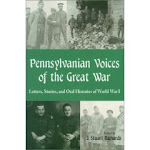
The Curtis JN-4 Jenny the type aircraft used in this story.

A typical Barnstormer of 1920
If only we had time machines. I certainly would be travelling back to July 23, 1920 to see this event.
Aero plane Big Attraction in Schuylkill Haven.
Schuylkill Haven Call
Friday July 23, 1920
This section was given an excellent exhibition of aeroplaning, aero plane tricks and thrills and an opportunity to ride in the air last week by Messrs. Stewart and Fisher of Allentown. With their American Curtis machine, Moyer’s Field near Bowen’s Grove rented for a few days and from this field flights were made. Forty-nine passengers from this and nearby towns enjoyed the unusual sensation as well as thrill by taking passage in the machine during Saturday, Sunday and Monday morning. 19 passengers were taken up on Saturday and 25 on Sunday morning.
The owner of the machine is Audrey G. Stewart of Allentown, who also owns a large garage in Allentown. It is a machine of 90 to 100 horse power and is the same machine these men used while in this section in 1919. The pilot is W. L. Fisher, who was a member of the U.S. Aero Squadron during the late war. Mr. Stewart at one time was a balloonist and traveled for a circus and on one contract made 800 parachute drops. He was paid for this hazardous work at the rate of but ten dollars per week for a period of two years. Mr. Stewart plans to return to this section within several months time with parachute equipment which he will use in dropping from the aero plane while high above the earth.
During the three day stay here, pilot Fisher daily entertained the people of this section by his daring spirals, dips; loop the loops, rolls and straight plunges to the earth. Oftentimes he flew quite low over the town and when giving his exhibitions many people who were watching the same are known to have gone indoors feeling sure he had lost control of the machine and was dropping to earth. During one of the exhibitions the owner, Mr. Stewart, walked about on the wings, stood on one foot, etc. while high in the air. Asked about whether he was not taking big chances in doing these stunts he stated that if he lost his balance he would not fall off the plane as he would catch on the strong supporting cables. Asked about what would happen if he made a misstep, he stated this was different. All in all the general public obtained an excellent idea of an aero plane, its construction, operation and for the first time, in this section, saw the thrilling stunts one reads about in papers and magazines.
The cost for a flight in the aero plane was set at the rate of one dollar a minute. Among the locals known to have taken a chance are. Dr. A. H. Detweiler, James Schucker, Fred B. Reed, Irwin Becker, Ray Becker, Harry Bittle, Reuben Hoffman, H. A. Reber, Walter Heffner, Edward Bittler, Howard Deibert, Harry Winkleback, Preston Souder, Muriel and Genevieve Souder and Mrs. G. O. O. Bowers.
The Curtiss "Jenny" America's most famous World War I airplane, was developed by combining the best features of the Curtiss "J" and "N" models. The model J made in 1914 flew reconnaissance against Pancho Villa's Mexican revolutionaries. A 1915 version, the JN-3, was used in 1916 during Pershing's Punitive Expedition into Mexico. Its poor performance, however, made it unsuited for field operations. The JN-3 was modified in 1916 to improve its performance and redesignated the JN-4, affectionately nicknamed the "Jenny."
The twin seat arrangement was ideal for training purposes, so it was generally used for primary flight training; some were equipped with machine guns and bomb racks for advanced training. With America's entry into World War I on April 6, 1917, the Signal Corps began ordering large quantities of JN-4s, and by the time production was terminated after the Armistice, more than 6,000 had been delivered, the majority of them JN-4D. After World War I, hundreds were sold on the civilian market. The airplane soon became the mainstay of the "Barnstormer" of the 1920s.
Availability, low cost, and forgiving handling characteristics made it very popular. Appearance throughout the country awakened people to aviation; became part of American folklore in early 20s. On the other hand, large number and low cost of surplus Jennies effectively killed the market for new aircraft until mid-20s. New models did not gain a foothold until supply of surplus aircraft exhausted. Jennies were still being flown in the 1930s.






No comments:
Post a Comment